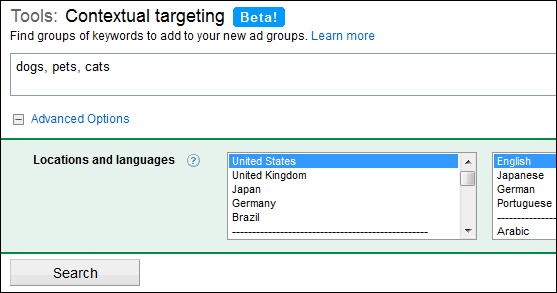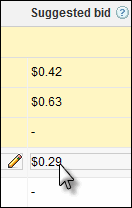
This is the sixth post in a series that focuses on using the various tools located within the Google AdWords tools and analysis tab. Previous posts have focused on:
- The Google AdWords change history tool
- The AdWords conversion tab
- Google Analytics Reporting within the AdWords Interface
- Google Website Optimizer
- The Google AdWords Keyword Tool
- The Google AdWords Traffic Estimator
- The Google AdWords Placement Tool
In this post we’ll walk through how to get the most out of the Google AdWords Contextual Targeting Tool.
What Is the Contextual Targeting Tool?
In much the same way that the placement tool allows you to find websites that would be good targeting candidates for your display campaigns, the contextual targeting tool allows you to identify good groups of keywords to target within your display network campaigns.
How to Use the AdWords Contextual Targeting Tool
A good way to start with the AdWords contextual targeting tool is to look at a really broad theme and get back some initial suggestions from the tool:
The thing that makes this tool really powerful is that, as you can see in the above screenshot, it’s not just suggesting keywords: its recommending pre-grouped ad groups complete with a proposed keyword list.
As with the other keyword and placement suggestion tools, the tool offers some advanced options that allow you to designate location and language:
Once you’ve executed a search you can drill down on a suggestion by either expanding the suggestion or viewing a predicted placement. When you expand a group by clicking the plus button pictured, you can basically create a sub-group out of one of the terms contained in the initial group:
In the example above the dog 101 group has had the term “dogs 101 beagle” broken out and turned into its own, more specific grouping. In some instances you can continue to drill down from here to create more and more specific groupings from the tool.
The predicted placements can be called by clicking the ellipsis (…) in the picture above, and you’re then presented with a list of the types of sites this keyword group would likely trigger your ad on:
This is some really valuable information, and as we can see in the case of our beagle group there are some very irrelevant sites that our ads may be showing on (unless aspiring car boosters are also beagle enthusiasts, I guess).
Once you have a group that looks pretty good to you, you can make some last minute edits to the specific keyword list (add one or two, modify existing keywords, remove terms) and the suggested bids:
From there you can either add the new ad groups directly into an existing display campaign or export them as an AdWords Editor friendly file:
Before you add these groups to your campaigns, you need to look at the specific terms they’re including and consider the potential placements, and you should be incorporating any suggestions as part of a larger display strategy. Often these grouping suggestions can be a great starting point and can give you some excellent ideas, but you definitely want to pay careful attention to the structure of the groups that are being generated for you and edit the groups before you turn them on within active campaigns.












